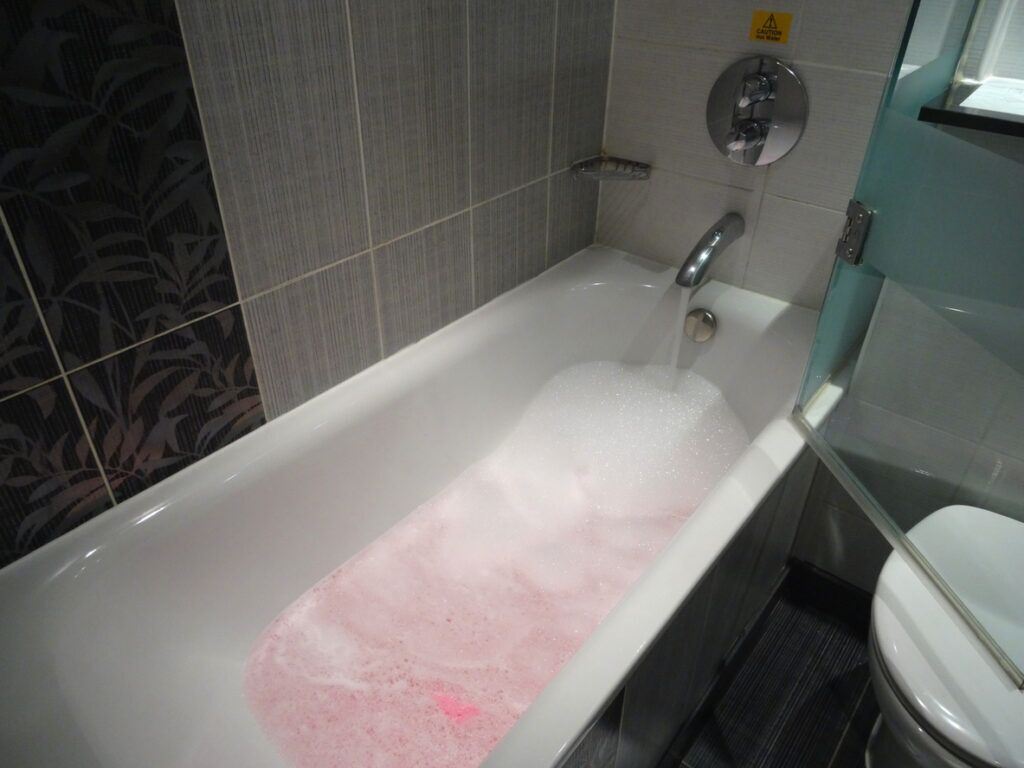Investigating Why Sewage Comes Up Through the Bathtub
Investigating Why Sewage Comes Up Through the Bathtub
Blog Article
We have found this great article about Why is Sewage Backing Up Into My Bathtub? below on the net and felt it made perfect sense to relate it with you on my blog.

Sewer backup in the bathtub can be a traumatic and unhygienic problem for any type of house owner. Not only is it bothersome, however it also positions significant wellness risks and suggests underlying issues with the plumbing system. Recognizing why sewage is turning up through the bathtub is vital for taking suitable activity to address the trouble properly.
Intro to the Problem
Common Factors for Sewage Back-up
Obstructions in the Sewage System Line
One of the most usual root causes of sewer backup is an obstruction in the drain line. This can take place because of the build-up of debris, grease, or international things in the pipes, preventing appropriate circulation and causing sewer to support right into your bath tub.
Tree Root Intrusion
Tree origins seeking dampness and nutrients can penetrate drain lines via tiny splits or joints. Gradually, these roots can expand and increase, triggering significant damages to the pipelines and resulting in sewage back-up concerns.
Comprehending the Issue
When sewage starts backing up right into the bathtub, it's a clear sign of a trouble with the drain system. The wastewater that should be moving far from your home is rather finding its back right into your space, which can lead to significant damages and health hazards.
Potential Causes
Numerous aspects can contribute to sewer backup in the tub. From blockages in the sewage system line to problems with the plumbing framework, recognizing the source is essential for locating a remedy.
Aging Facilities
Older homes may have outdated plumbing systems that are more vulnerable to rust, splits, and degeneration. As pipelines age, they end up being much more prone to leakages and clogs, boosting the possibility of sewer backup cases.
Heavy Rainfall or Flooding
During periods of heavy rainfall or flooding, the sewer system might come to be overwhelmed with excess water, causing back-ups and overflows. This can lead to sewage supporting into tubs and various other components inside the home.
Signs of Sewer Backup
Foul Odors
Unpleasant odors emanating from drains or components, particularly in the washroom, may indicate sewer backup problems. These smells are often solid and relentless, indicating an issue that needs prompt attention.
Slow Draining Fixtures
Bathtubs, sinks, and commodes that drain pipes gradually or otherwise in any way could be experiencing sewer backup. If numerous fixtures are impacted concurrently, it's likely that the problem stems from a typical point, such as the main sewer line.
Gurgling Sounds
Unusual gurgling or gurgling noises coming from drains when water is running somewhere else in your house are indicative of air entraped in the plumbing system. This air build-up can result from sewage backup and should be examined immediately.
Health And Wellness Dangers Connected With Sewage Backup
Contamination of Water
Sewage backup can pollute the supply of water in your house, positioning a serious health and wellness threat to you and your household. Exposure to polluted water can bring about gastrointestinal issues, skin infections, and other diseases.
Mold and mildew Development
Moisture from sewage backup can create ideal conditions for mold growth in your house. Mold spores can aggravate respiratory system troubles and cause allergic reactions in delicate individuals, making timely cleaning essential.
Spread of Condition
Sewage contains hazardous bacteria, viruses, and parasites that can cause a series of illness, including hepatitis, cholera, and gastroenteritis. Coming into contact with sewer or contaminated surfaces puts you in jeopardy of infection.
Cleaning Up After Sewage Back-up
Sanitation Procedures
Thoroughly sanitize and disinfect impacted areas after sewage back-up to eliminate unsafe germs and avoid mold and mildew development. Usage suitable cleansing products and protective gear to ensure secure and efficient cleanup.
Remediation of Impacted Locations
Fix any damage to floor covering, walls, or fixtures caused by sewage back-up. Depending upon the extent of the damage, you might require to replace carpeting, drywall, or various other products to recover your home to its pre-loss problem.
Immediate Actions to Take
Turning Off Water
In the event of sewage backup, it's important to turn off the water system to avoid further contamination and damages. Locate the primary water shutoff valve in your home and shut it off up until the problem can be fixed.
Speaking To an Expert Plumber
Dealing with sewage back-up is not a DIY task. Call a qualified plumber with experience in dealing with sewage-related concerns to examine the situation and execute necessary repairs or cleanings.
Avoiding Contact with Polluted Water
Until the sewer back-up is solved, avoid contact with polluted water to stop the spread of bacteria and virus. Use safety gear if you have to remain in the damaged area and wash your hands thoroughly afterward.
Preventive Measures
Routine Maintenance of Sewer Lines
Set up routine assessments and upkeep of your sewer lines to determine and address prospective issues before they escalate into major issues. This can consist of cleaning debris, inspecting for tree origin invasion, and fixing any type of broken pipes.
Setting Up Bayou Shutoffs
Consider mounting bayou valves in your plumbing system to avoid sewer from receding into your home during periods of heavy rainfall or flooding. These shutoffs instantly close when water draws back up, safeguarding your property from contamination.
Correct Disposal of Family Waste
Avoid flushing anything apart from toilet tissue and human waste down the toilet to stop obstructions and clogs in the sewage system line. Dispose of grease, oil, and various other family chemicals correctly to decrease the threat of plumbing problems.
Why Is Water Backing Up in My Bathtub When I Flush My Toilet?
What to do about a sewer line clog
First, don’t bother with plunging. No amount of plunging will dislodge the clog in a sewer line. The clog is too far away. Plungers are for clogs in the toilet itself, not the sewer line. Plus, the most likely causes of a sewer clog are:
Tree roots Flushed toys or feminine products Grease buildup Those items don’t move easily. And in the case of tree roots, the roots need to be cut out of the pipe and the pipe will need to be repaired.
You’ll need a closet auger. A closet auger is a type of plumber’s snake with a protective cover to keep from scratching the delicate porcelain toilet. If the clog is further down, you may need to remove the toilet or use one of your cleanouts to get to the clog.
We also recommend doing a video inspection of the drain to ensure that the cause of the clog has been completely removed. Otherwise, you could have the same problem again in a few days or weeks.
https://mspplumbingheatingair.com/blog/why-is-water-backing-up-in-my-bathtub-when-i-flush-my-toilet

Do you like reading up on What to Do if Sewage Starts Coming Up Through Your Bathtub? Write feedback down below. We would be happy to find out your opinion about this write-up. We hope that you visit us again before long. Those who enjoyed reading our blog entry if you please make sure you remember to share it. Thank you so much for taking the time to read it.
Call Today
Report this page